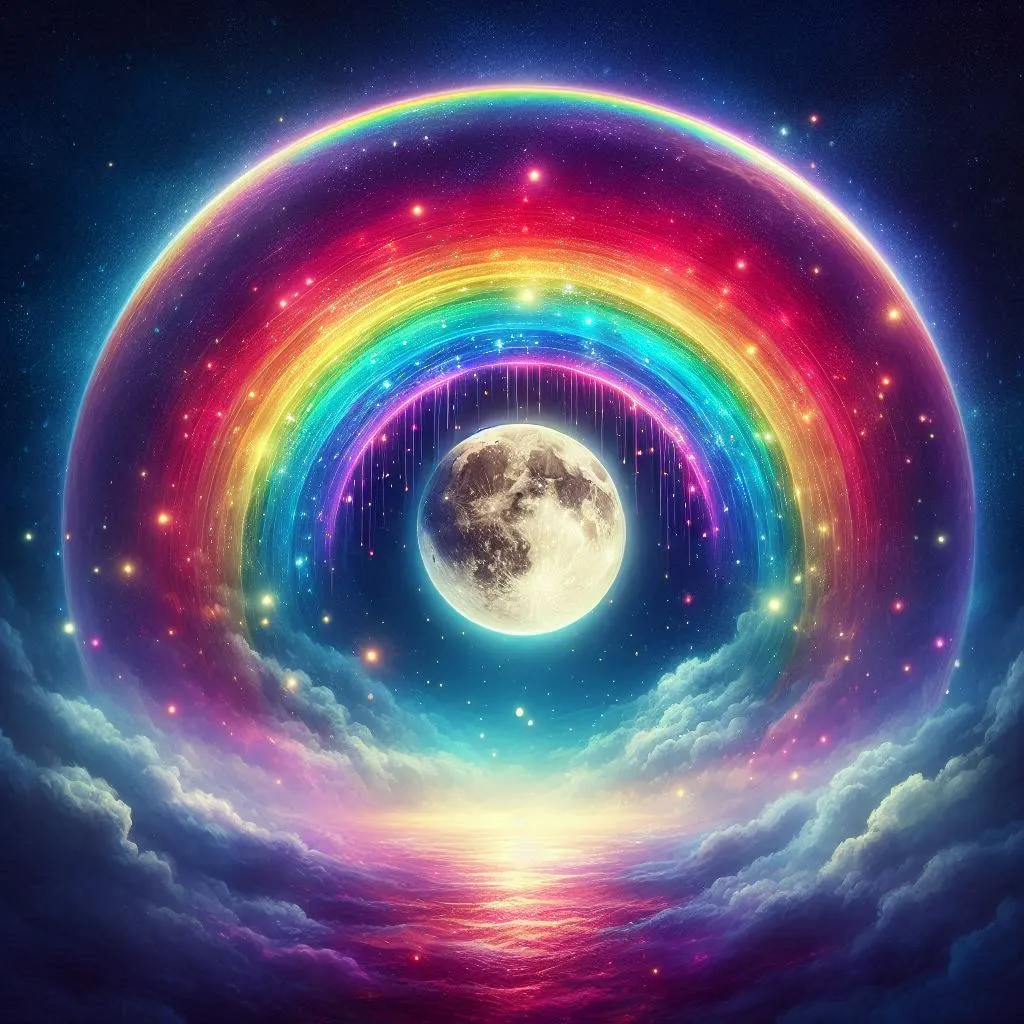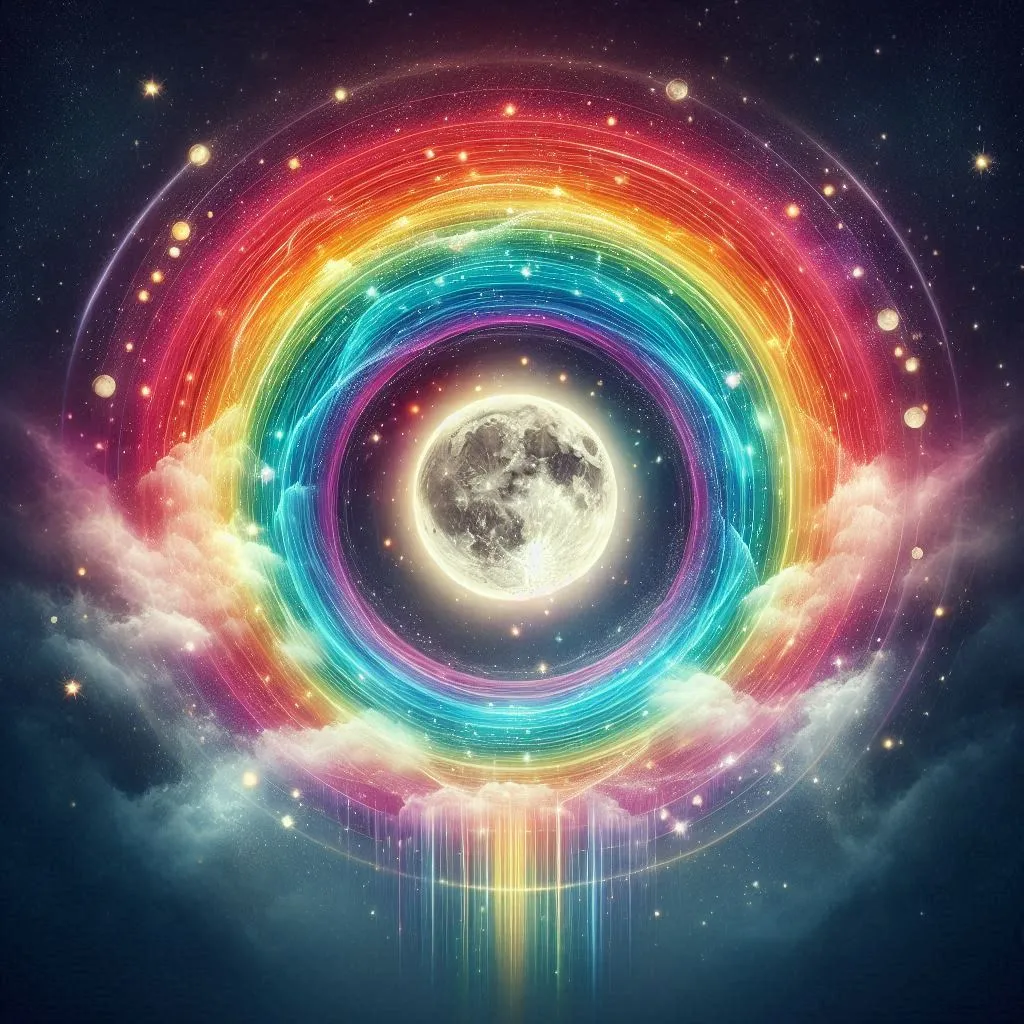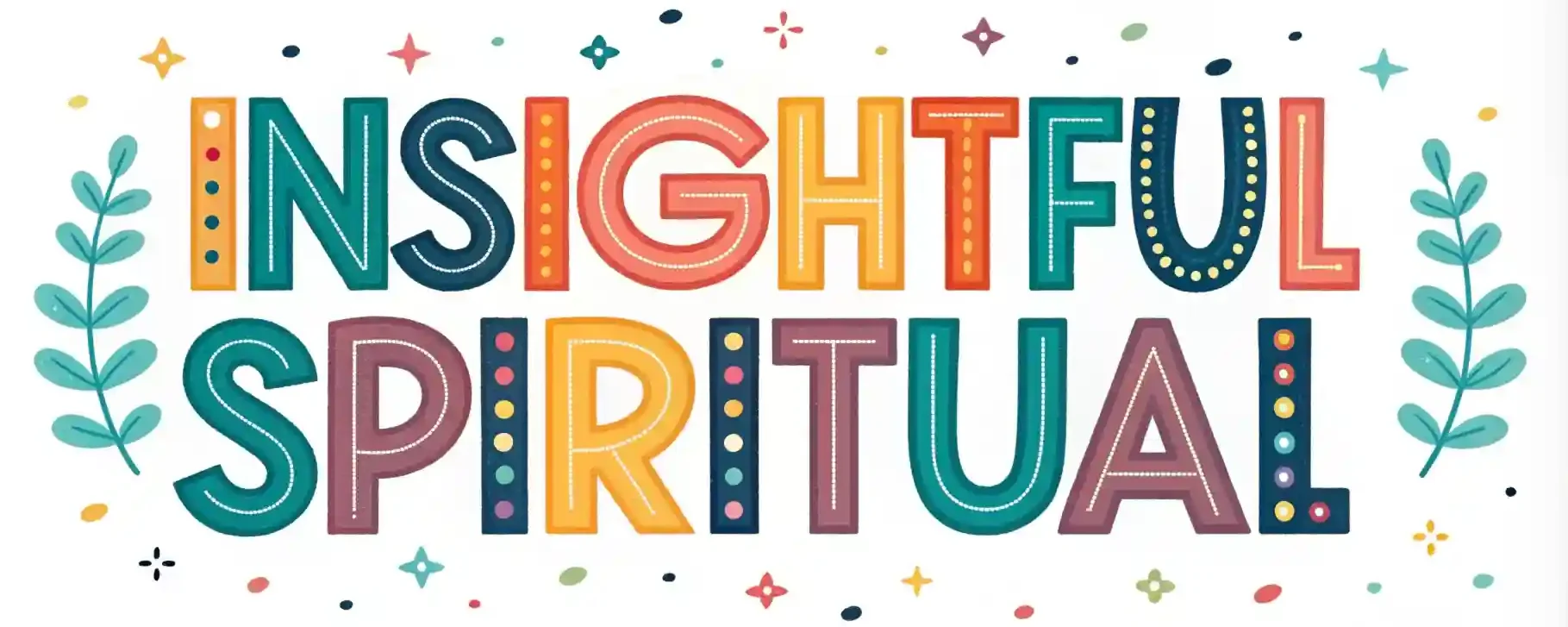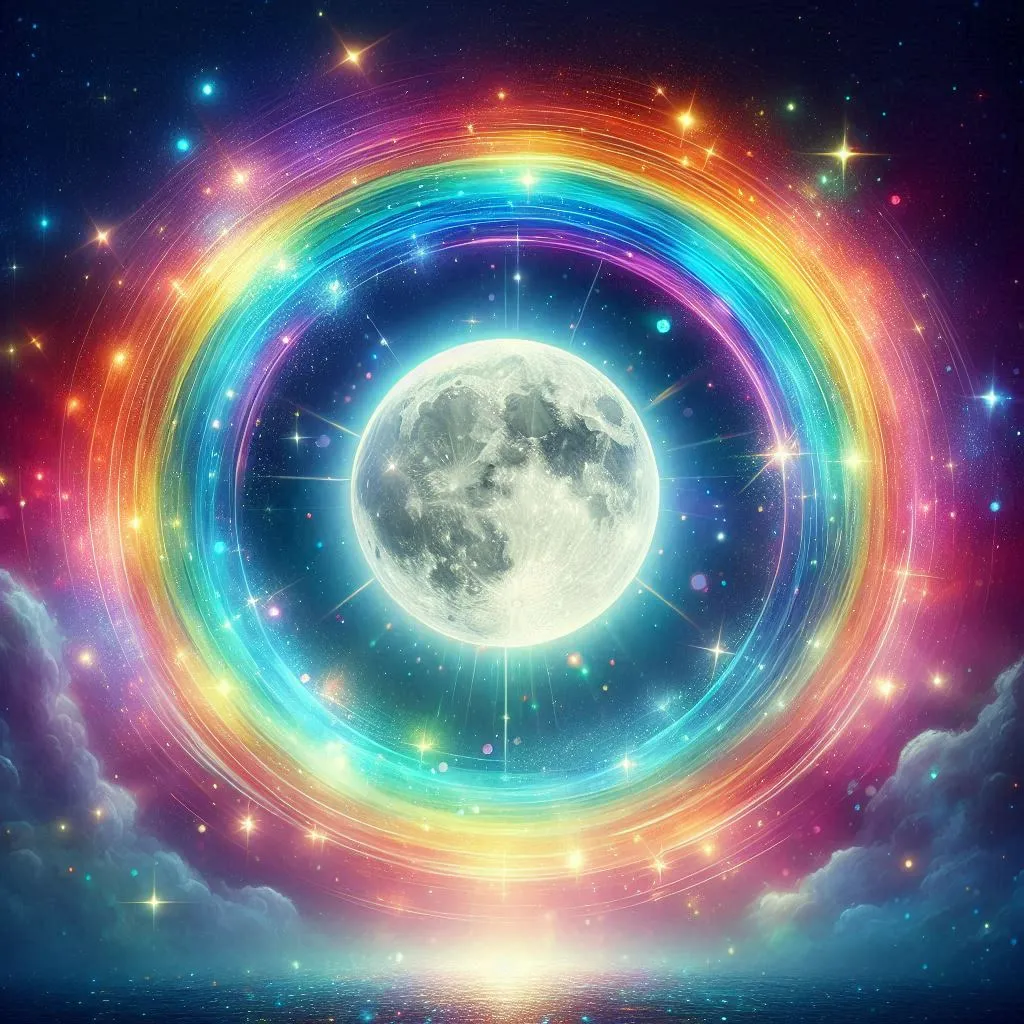13 Biblical Meanings of a Rainbow Around the Moon: A Spiritual Guide
As you gaze up at the night sky, you can’t help but wonder about the significance of a rainbow around the moon. Although the Bible doesn’t explicitly mention this phenomenon, the symbolism of rainbows is deeply rooted in scripture.
Representing God’s promise, covenant, and redemption, rainbows evoke a sense of hope and renewal. But what if we were to apply this symbolism to a lunar rainbow? Would it signify a divine message of illumination and guidance, leading humanity through life’s challenges?
The possibility is intriguing, and exploring this concept further may just reveal a deeper understanding of God’s promise and our place in the universe.
Biblical Meaning of Rainbow Around the Moon In a Nutshell
- The absence of moonbows in the Bible raises questions about the selective nature of divine revelation and cultural influences on biblical narratives.
- Rainbows symbolize divine promise, covenant, and redemption, but moonbows are eerily absent, sparking curiosity about their significance.
- The vibrant colors of the rainbow represent God’s multifaceted character, but the moonbow’s omission leaves its symbolism unclear.
- The Bible frequently employs light as a metaphor for spiritual illumination, wisdom, and divine presence, but moonbows are not mentioned.
- The harmony and balance symbolized by the rainbow around the moon may hold a deeper, unexplored significance in the biblical narrative.

Moonbows in the Bible
As you excavate into the sacred scriptures, you’ll discover that moonbows, also known as lunar rainbows, are eerily absent from biblical accounts, sparking curiosity about the significance of this omission in the context of divine revelation.
This absence is particularly striking, given the importance of rainbows in biblical narratives.
In contrast, moon folklore and lunar mythology abound with stories about moonbows, often associating them with magical or mystical properties.
For instance, ancient cultures believed that moonbows held the power to bring good fortune, fertility, or even protection from evil spirits.
The omission of moonbows in the Bible raises questions about the selective nature of divine revelation and the role of cultural influences in shaping biblical narratives.
Were moonbows intentionally excluded, or did they simply not hold the same significance in the ancient Israelite context?
As you plunge deeper into the mystery of moonbows in the Bible, you’ll uncover a complex web of cultural, historical, and theological factors that underlie this intriguing omission.
Symbolism of Rainbows
Moonbows are conspicuously absent from biblical accounts, while rainbows, on the other hand, are imbued with rich symbolism, serving as a potent metaphor for divine promise, covenant, and redemption in the biblical narrative.
The vibrant color spectrum of the rainbow, comprising seven distinct hues, represents the multifaceted nature of God’s character.
The arc significance of the rainbow, spanning the heavens, symbolizes the bridge between the earthly and divine domains.
As you explore further into the symbolism of rainbows, you’ll discover that each color holds a unique significance.
Red, the first color, represents God’s justice and wrath, while violet, the last, signifies spiritual growth and transformation.
The rainbow’s arc shape, often seen as a circle, represents God’s eternal and unbroken nature.
The rainbow’s beauty and majesty evoke a sense of wonder, inviting you to contemplate the divine mysteries hidden within its colors and shape.

God’s Promise and Covenant
In the biblical narrative, God’s promise and covenant are inextricably linked with the rainbow, which serves as a tangible symbol of His commitment to humanity, reminding us of His faithfulness and unwavering dedication to His people.
When you see a rainbow around the moon, you’re reminded of God’s promise to never again destroy the earth with a flood, as stated in Genesis 9:13-17. This covenant is a two-way commitment, where God promises to uphold His end, and you’re invited to respond in faith, trusting in His Divine assurance.
The rainbow represents God’s faith commitment to you, a promise to be your Rock and Refuge in times of need.
This covenant is a reminder of God’s unwavering love and faithfulness, even when you falter or fail.
Sign of Hope and Renewal
Hope revives when a rainbow encircles the moon, signaling a divine message of renewal and restoration that resonates deep within the human spirit.
As you gaze upon this breathtaking spectacle, you’re reminded that God’s promises are still in effect, offering solace and comfort in times of turmoil.
This Celestial Omen serves as a beacon of hope, illuminating the path forward and guiding you through life’s challenges.
The rainbow around the moon is an Ethereal Vision that transcends the mundane, speaking directly to your soul and awakening a sense of purpose.
In this moment, you’re invited to reflect on your journey, acknowledging the struggles and triumphs that have shaped you.
The rainbow’s vibrant colors symbolize the beauty and diversity of human experience, reminding you that your story is unique and valuable.
As you bask in the radiance of this heavenly display, you’re empowered to let go of fear and doubt, embracing instead the promise of new beginnings and fresh starts.
The rainbow around the moon is a powerful reminder that hope is never lost, and that redemption is always within reach.
Biblical Meaning of Light
As you explore into the biblical meaning of light, you’ll discover its profound significance in the narrative of redemption and salvation.
The Bible frequently employs light as a metaphor for spiritual illumination, wisdom, and divine presence, underscoring its significance in this narrative. This motif is woven throughout the scriptures, symbolizing God’s presence, guidance, and redemption.
In Psalm 104:2, God is clothed in light, exemplifying divine radiance and Heavenly illumination.
Jesus is referred to as the light of the world in John 8:12, emphasizing His role as the source of spiritual illumination.
In Revelation 22:5, the city of God is described as having no need for the sun or moon, for God’s glory illuminates it, highlighting the ultimate fulfillment of God’s purpose.
As you explore the biblical meaning of light, you’ll gain a deeper understanding of God’s character and His relationship with humanity.
Light represents hope, guidance, and redemption, drawing you closer to the heart of God.
Water and Spirituality
Through the lens of spirituality, water emerges as a multifaceted symbol, carrying profound significance in the biblical narrative, where it frequently represents purification, renewal, and transformation.
As you plunge deeper into the symbolism, you’ll discover that water is often linked to spiritual rebirth and regeneration.
In this framework, Sacred Fountains embody the divine source of life, quenching your spiritual thirst and revitalizing your connection with the sacred.
Furthermore, the Cosmic Tides, with their ebbs and flows, mirror the rhythms of your inner life, reminding you to surrender to the natural cycles of growth and transformation.
By embracing water’s symbolic significance, you’ll come to understand the intricate dance between the material and spiritual domains.
As you explore the mystical dimensions of water, you’ll find yourself immersed in a profound journey of self-discovery, spiritual growth, and renewal.
Celestial Wonders and Miracles
Your gaze is drawn upward to the celestial canvas, where lunar halos and starlight serendipitously converge to orchestrate breathtaking spectacles that have mesmerized humanity for centuries.
As you witness these celestial wonders, you can’t help but feel a deep sense of awe and reverence for the divine display unfolding above.
The harmony of light and color, the precision of celestial mechanics, and the sheer scale of the cosmos all converge to evoke a profound sense of wonder and belonging.
Some of the most striking examples of cosmic beauty include:
- Lunar rainbows, which appear as vibrant, ethereal arcs around the moon
- Solar flares, which burst forth from the sun’s surface in brilliant, fiery displays
- Meteor showers, which streak across the night sky like celestial fireworks
These celestial wonders and miracles invite you to pause, reflect, and recalibrate your perspective.
They remind you of the infinite complexity and beauty of the universe, and the sacred bond that connects you to the cosmos.
As you gaze upon these divine displays, you’re reminded that you’re part of a larger, interconnected whole – a universe that’s full of mystery, majesty, and wonder.
Divine Messages in Nature
Beyond the aesthetic appeal of celestial wonders, nature’s language whispers subtle yet profound messages, beckoning you to decipher the symbolic codes embedded within the rhythms and patterns of the natural world.
As you tune into nature’s language, you’ll discover that sacred landscapes hold the keys to revealing deeper understanding and connection.
The intricate web of relationships between earth, sky, and water speaks to the harmony and balance that exist within the universe.
You’re invited to explore the symbolic resonance of natural phenomena, such as the rainbow around the moon, which serves as a beacon, guiding you toward hidden truths and mystical insights.
By attuning yourself to nature’s language, you’ll begin to recognize the synchronicities and patterns that weave together the fabric of existence.
This sacred dialogue between you and the natural world has the power to awaken your sense of belonging, igniting a deeper sense of purpose and meaning.
As you listen to nature’s whispers, you’ll uncover the divine messages hidden within the landscapes, awaiting your discovery.
Ancient Cultural Significance
As you excavate into the ancient cultural significance of the rainbow around the moon, you’ll discover a rich tapestry of myths, legends, and symbolism.
In ancient cultures, the rainbow around the moon was revered as a potent symbol, imbuing lunar eclipses with spiritual significance and mystical power. This phenomenon was often seen as a bridge between the mortal world and the domain of the gods.
Some of the most fascinating aspects of ancient cultural significance include:
Mythic Origins
The rainbow around the moon was often tied to mythological stories of creation, destruction, and rebirth. It was seen as a harbinger of change, signaling a shift in the cosmic balance.
Cosmic Symbolism
The rainbow’s colors were believed to represent the harmony and balance of the universe. The lunar eclipse, with its eerie darkness, was seen as a temporary disruption of this balance, which the rainbow restored.
Divine Communication
The rainbow around the moon was often viewed as a means of divine communication, conveying messages from the gods to humanity.
Moon’s Spiritual Significance
In many spiritual traditions, you’ll find the moon, particularly when adorned with a rainbow, is revered as a sacred entity, embodying the mystical and the divine.
As you plunge deeper into Moon Mysteries, you’ll discover that the lunar body is often seen as a symbol of the subconscious, intuition, and the feminine principle.
Lunar Symbolism is rich in meaning, representing the cyclical nature of life, death, and rebirth.
The moon’s phases are thought to mirror the human experience, with the full moon symbolizing illumination, fulfillment, and spiritual awakening.
You’ll find that many spiritual seekers turn to the moon for guidance, using its cycles to tap into their inner wisdom and connect with the universe.
The moon’s mystical aura is believed to facilitate personal growth, transformation, and healing.
As you explore the moon’s spiritual significance, you’ll begin to appreciate the profound impact it has on your emotional and spiritual well-being.
Lunar Cycles and Faith
You’ll often find that faith traditions worldwide have synchronized their spiritual practices with the lunar cycles, leveraging the moon’s rhythmic pulse to foster a deeper sense of devotion and spiritual connection.
This phenomenon isn’t unique to any particular religion, as various cultures have recognized the moon’s influence on human emotions and behavior. By aligning their faith practices with the moon phases, individuals can tap into the symbolic energies associated with each phase.
Some notable examples include:
- New Moon: A time for new beginnings, renewal, and setting intentions. Many faiths use this phase to initiate new projects, pray for guidance, or seek spiritual growth.
- Full Moon: A period of completion, celebration, and release. Faith practices may involve expressing gratitude, letting go of negativity, or marking significant milestones.
- Lunar Eclipse: A rare event often associated with spiritual awakening, transformation, or revelation. Faith traditions may use this phase to seek deeper understanding, forgiveness, or spiritual rebirth.
Beauty and Awe of Creation
The lunar cycle‘s mesmerizing display of light and shadow evokes a profound sense of beauty and awe, reminiscent of humanity’s ancestral reverence for the moon as a symbol of creation and the mysteries of the universe.
You can’t help but feel a sense of cosmic wonder as you gaze up at the night sky, witnessing the moon’s transformative power. The way it illuminates the darkness, casting an ethereal glow on the earth below, is a declaration to the Divine presence that permeates all of existence.
As you stand in awe of this celestial spectacle, you’re reminded of the intricate harmony that governs the universe. The moon’s cycles, the tides, the seasons – all are interconnected, working in tandem to create an intricate tapestry of life.
You’re struck by the realization that you’re a part of this grand narrative, connected to the very fabric of creation. In this moment, you feel a deep sense of belonging, a sense of oneness with the universe and its mysteries.
Spiritual Connection to Heaven
As the moon’s luminescent glow evokes a sense of cosmic wonder, your gaze is drawn upward, seeking a deeper spiritual connection to the celestial domain, where the moon’s beauty is merely a reflection of the divine splendor that awaits. You begin to sense that the rainbow around the moon is more than just a breathtaking spectacle – it’s a gateway to the divine.
The rainbow serves as a Heavenly portal, bridging the gap between the earthly territory and the spiritual dimension.
As a Divine messenger, the rainbow conveys a message of hope, promise, and redemption, reminding you of God’s covenant with humanity.
Through the rainbow, you’re invited to transcend the boundaries of time and space, connecting with the divine essence that permeates the universe.
As you gaze upon the rainbow, you’re reminded of the sacred bond between heaven and earth, and the longing in your heart to connect with something greater than yourself. The rainbow around the moon becomes a symbol of your deep-seated desire for spiritual connection, guiding you toward a deeper understanding of the mysteries of the universe.
Frequently Asked Questions
Can a Moonbow Appear During a Full Moon or Only a Crescent Moon?
You’ll notice that a moonbow can appear during any moon phase, but it’s more likely to occur when the lunar illumination is low, typically during a crescent moon, as the Moon’s brightness overpowers the fainter bow colors.
Are Moonbows Visible From Anywhere on Earth or Only at Certain Latitudes?
You’ll find that moonbows are visible from anywhere on earth, but ideal viewing requires high altitude locations with specific atmospheric conditions, making certain latitudes more conducive to spotting these lunar rainbows.
How Long Does a Moonbow Typically Last in the Night Sky?
As you observe a moonbow, you’ll notice it typically lasts around 30 minutes to an hour, depending on the Moon phase and Lunar shadow’s alignment, which affects the duration of this rare, breathtaking spectacle in the night sky.
Can a Moonbow Appear in Conjunction With Other Celestial Events Like Eclipses?
You’ll find that a moonbow can indeed occur in tandem with other celestial events, like eclipses, when lunar alignment and celestial harmony converge, creating a rare and awe-inspiring spectacle in the night sky.
Are Moonbows More Common During Certain Times of the Year or Lunar Cycles?
You’ll find that moonbows are more frequent during specific times of the year and lunar cycles, particularly when the Moon is full and orbits near the Earth’s ecliptic, resulting in ideal solar alignment, and when it’s in its bright, waxing gibbous Moon phase.

Hi, I’m Aurelia Starfrost, your spiritual guide at InsightfulSpiritual.com. I love exploring ancient wisdom and modern practices to help you on your journey. With a focus on meditation and energy healing, I’m here to guide you to find solace within and discover your spiritual essence.







